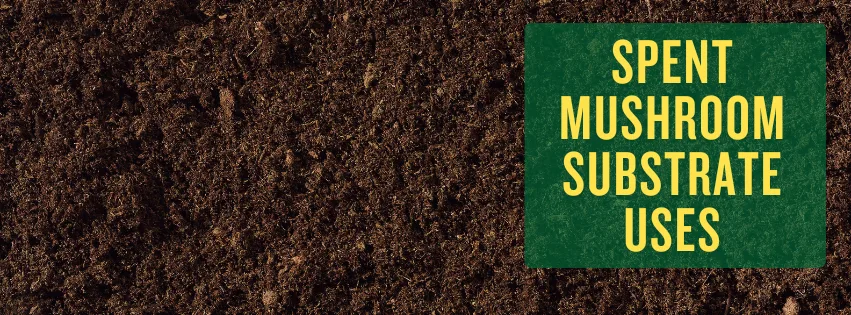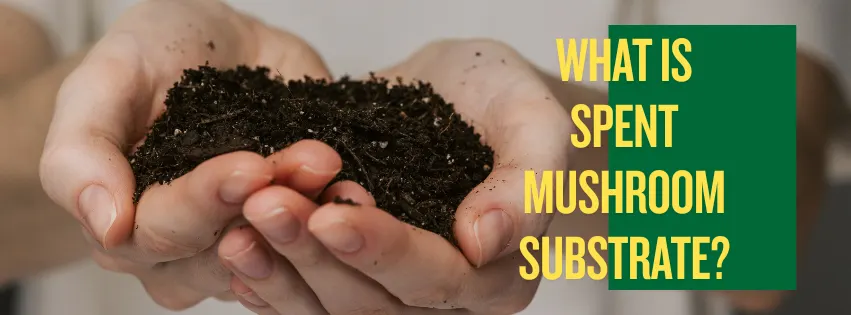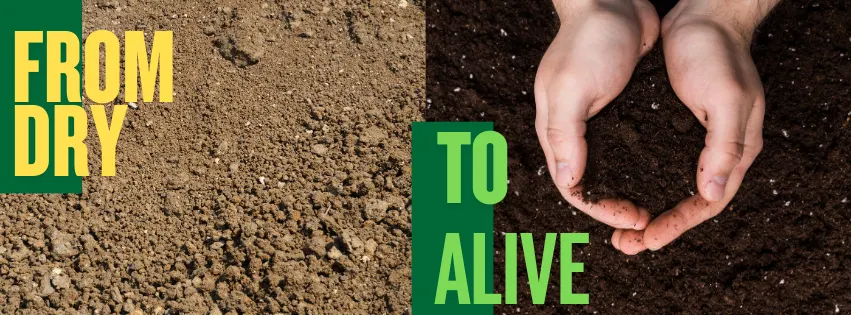
Spent Mushroom Substrate Uses: A Complete Guide
Spent mushroom substrate uses are becoming an important topic in agriculture. After mushrooms are harvested, huge amounts of leftover substrate—made of straw, manure, gypsum, and organic material—are generated. This material, known as spent mushroom substrate (SMS) or mushroom compost, is often discarded as waste. But in reality, SMS is full of organic matter, beneficial microbes, and essential nutrients like nitrogen, phosphorus, and potassium.
If managed properly, SMS can be a powerful tool for soil improvement, crop yield enhancement, and sustainable farming. From being a soil conditioner and fertilizer to a feed supplement and bioenergy resource, there are many practical ways farmers can use SMS to reduce costs and improve their fields.
What We Cover in This Article
In this guide on spent mushroom substrate uses, you will learn:
What is Spent Mushroom Substrate (SMS)? – simple explanation for farmers.
Spent Mushroom Substrate Uses in Farming – as a soil conditioner, fertilizer, and nursery medium.
Other Uses of SMS – in animal feed, biogas production, and biochar.
Environmental Benefits – SMS for pollution control and soil regeneration.
Precautions Farmers Should Know – how to prepare and apply SMS safely.
Step-by-Step Guide for Farmers – practical instructions for field use.
By the end, you will understand how to turn SMS from a waste material into a valuable input for soil fertility, crop yield, and sustainable agriculture.
Spent Mushroom Substrate Uses as a Soil Conditioner
One of the most common spent mushroom substrate uses is as a natural soil conditioner. Adding SMS to farm soil improves:
Soil structure – making it lighter, airy, and easier for roots to spread.
Water holding capacity – sandy soils benefit by retaining more moisture.
Nutrient content – SMS slowly releases nitrogen, phosphorus, and potassium.
Soil microbes – SMS feeds beneficial bacteria and fungi, which protect plants.
👉 Farmers can apply 2–4 tons of SMS per acre by mixing it into the topsoil or using it as mulch.
Spent Mushroom Substrate Uses as Organic Fertilizer
Another major spent mushroom substrate use is as an organic fertilizer. Unlike chemical fertilizers that give quick but short-term results, SMS improves soil fertility gradually. Benefits include:
Increased organic carbon, essential for soil health.
Enhanced nutrient cycling by soil microbes.
Reduction in chemical fertilizer requirement (up to 25–30%).
Eco-friendly solution for sustainable farming.
Farmers can use SMS directly in fields after composting or blend it with cow dung and crop residues for enriched manure.
Spent Mushroom Substrate Uses in Vegetable and Nursery Production
SMS is also gaining popularity in nurseries and horticulture. Studies show that mixing SMS with soil or cocopeat creates an excellent medium for growing:
Tomato and chili seedlings
Cabbage, cauliflower, and leafy vegetables
Fruit saplings like guava, mango, papaya
Benefits for nurseries:
Better root development
Reduced seedling mortality
Cheaper alternative to expensive potting mixes
Spent Mushroom Substrate Uses as Animal Feed
In some regions, SMS is explored as a supplement in animal feed. Because SMS contains partially digested straw and some proteins from fungal biomass, it can serve as roughage.
Cattle and buffaloes can digest small amounts when mixed with other fodder.
SMS should be dried and processed before feeding.
Veterinary experts recommend caution to avoid overuse.
👉 While not a replacement for traditional fodder, it can be used as a low-cost supplement in times of feed shortage.
Spent Mushroom Substrate Uses in Biogas and Biochar Production
One of the innovative uses of spent mushroom substrate is in bioenergy production.
Biogas production: SMS, being rich in organic matter, can be used in biogas plants along with cow dung and crop residues.
Biochar production: SMS can be pyrolyzed into biochar, which not only generates energy but also serves as a soil amendment.
Renewable energy: Farmers can set up small biogas units to use SMS for cooking fuel or electricity.
This creates circular agriculture, where waste becomes energy.
Spent Mushroom Substrate Uses in Pollution Control and Bioremediation
Scientists have found that SMS can also be used in environmental management:
It helps absorb heavy metals from polluted soils.
It supports microbes that break down pesticides and chemicals.
SMS-based filters can clean wastewater in small-scale systems.
Though these applications are still research-based, they show the future potential of SMS beyond farming.
Precautions in Using Spent Mushroom Substrate
While there are many spent mushroom substrate uses, farmers should take care:
Always age or compost SMS before use to reduce salinity and stabilize nutrients.
Avoid fresh SMS directly in seedbeds—it may harm seedlings.
Check moisture content—very wet SMS increases transport cost.
Mix with other organic matter (cow dung, crop residues) for best results.
How Farmers Can Use SMS Step-by-Step
Source SMS from mushroom farms or suppliers.
Compost or age for 4–6 weeks to reduce harmful residues.
Test pH and moisture if possible.
Apply to fields at 2–4 tons per acre as soil amendment.
Use in nurseries by mixing with cocopeat or soil.
Experiment in fodder/biogas after consulting experts.
From Waste to Resource
The list of spent mushroom substrate uses proves that this by-product is not waste—it is a valuable input for farming and beyond. By using SMS, farmers can:
Improve soil fertility naturally
Reduce dependence on costly chemical fertilizers
Boost crop yield and seedling growth
Explore new income opportunities in energy and feed
“Soil grows gold, but only if we keep it alive.”
Spent mushroom substrate is one such tool to keep our soil alive and farming sustainable.


